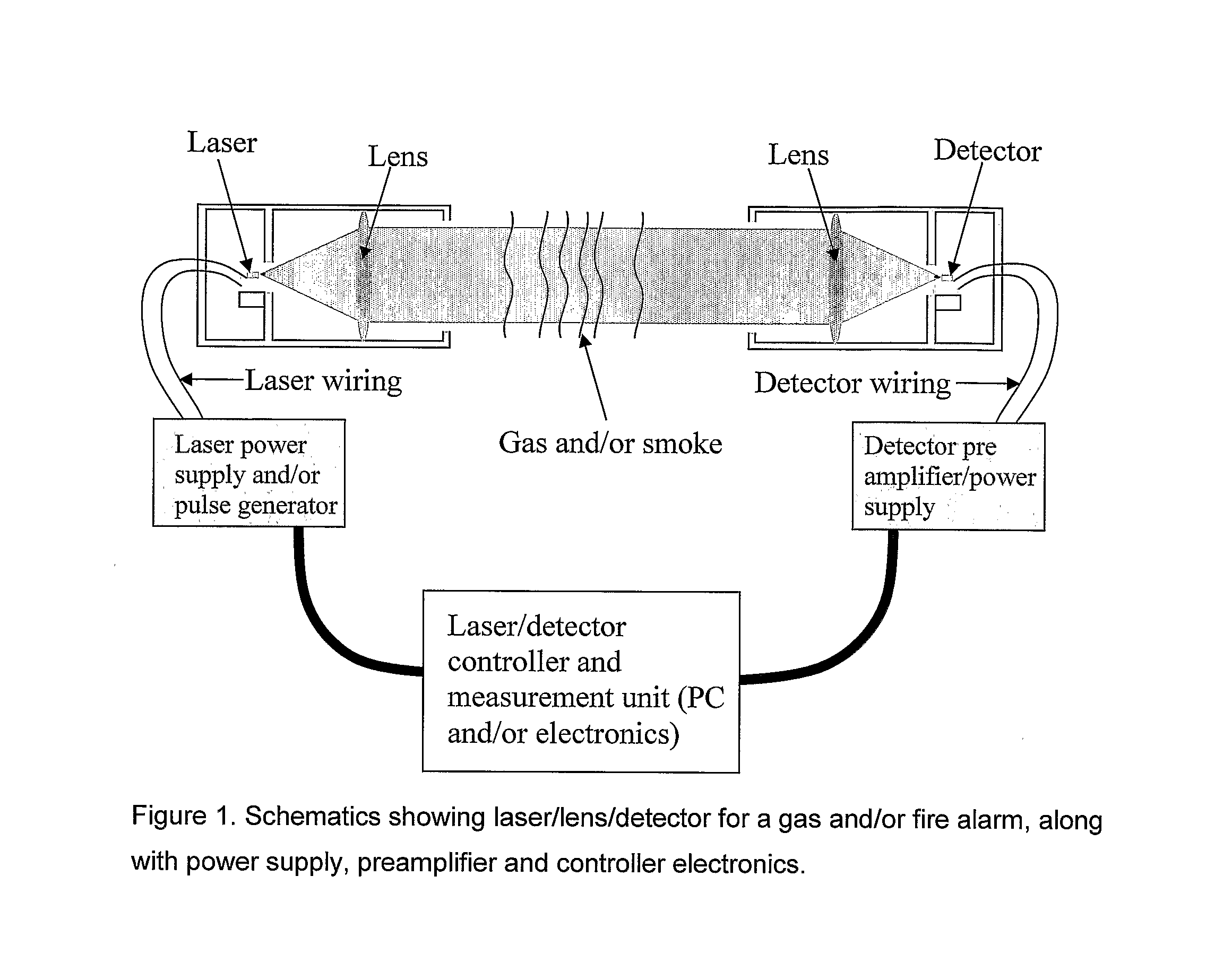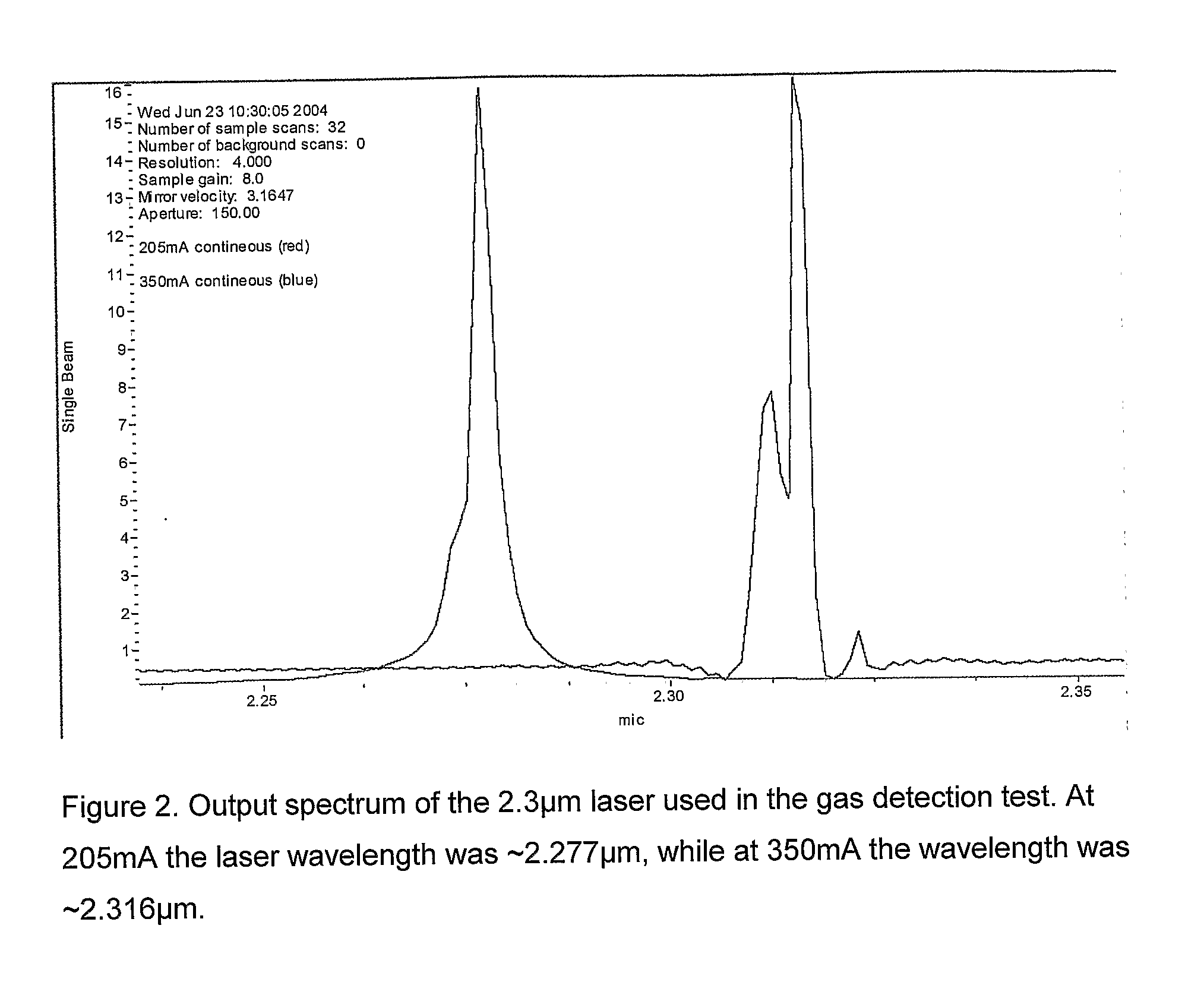Infrared Laser Based Alarm
a laser and infrared technology, applied in fire alarms, instruments, material analysis, etc., can solve the problems of inability to use, inability to prevent corrosive damage, and high cost of the system, so as to prevent frost formation and prevent corrosive damage from the ambient atmosphere
- Summary
- Abstract
- Description
- Claims
- Application Information
AI Technical Summary
Benefits of technology
Problems solved by technology
Method used
Image
Examples
examples
[0055]A system was built on the basis of a FPCM-2301 Mid-IR Fabry Perot laser at ˜2.3 μm (from Intopto A / S, Norway) which was mounted into a “transmitter”-housing with a collimating lens and power supply as shown in FIG. 1. The power supply of the tested system was actually mounted on the backside of the housing (unlike in the figure which has a separate box), so that the distance between the power supply and the laser was less. In front of the laser, we mounted a Concave-flat lens which had the laser in its focal point so that the laser beam was collimated into a parallel beam. This made it easy to adjust distance between the transmitter (containing the laser) and the detector. As shown in FIG. 1, the detector was mounted in a “reciever”-housing with a flat-Concave lens so that most of the laser beam was focused onto the detector. The pin-detector in the housing (a 2.3 μm InGaAs pin-detector from Sensors Unlimited Ltd., USA) was connected to a preamplifier which was mounted on the ...
PUM
 Login to View More
Login to View More Abstract
Description
Claims
Application Information
 Login to View More
Login to View More - R&D
- Intellectual Property
- Life Sciences
- Materials
- Tech Scout
- Unparalleled Data Quality
- Higher Quality Content
- 60% Fewer Hallucinations
Browse by: Latest US Patents, China's latest patents, Technical Efficacy Thesaurus, Application Domain, Technology Topic, Popular Technical Reports.
© 2025 PatSnap. All rights reserved.Legal|Privacy policy|Modern Slavery Act Transparency Statement|Sitemap|About US| Contact US: help@patsnap.com



